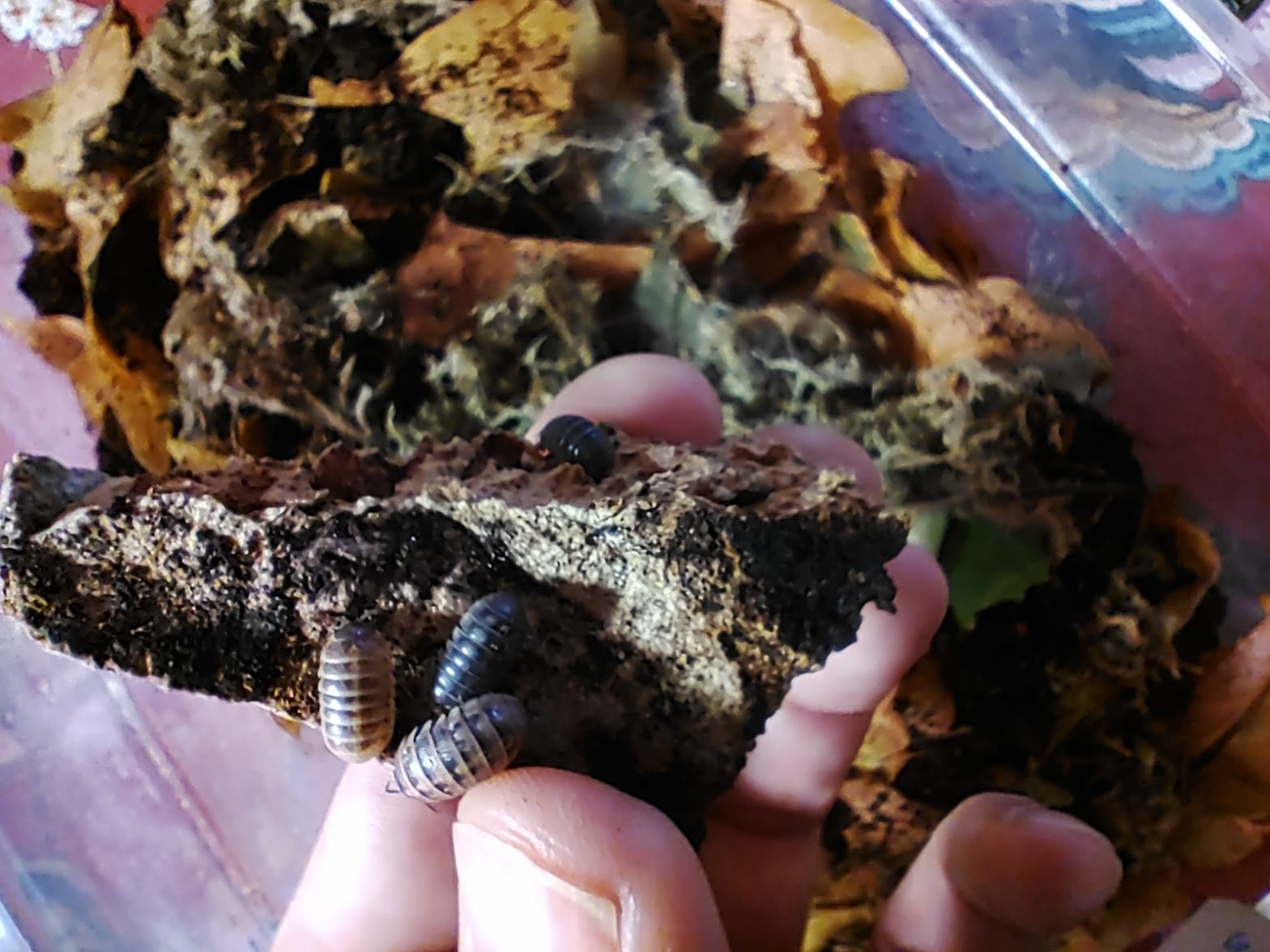My order from Smug Bug arrived yesterday and all the cultures look to be in mostly good shape. They’ve been released into their new enclosures, including some new, shallower and wider plastic tubs than what I’d used previously. These new tubs should provide more floorspace for the isopods while reducing unused headroom in the containers.
The isopods were shipped in small condiment cups stuffed with damp sphagnum moss. I dumped the contents of the moss into their newly-prepared enclosures, and came back a day later to pick apart the moss clumps from the deli cups to distribute the moss around the enclosure and to search for any dead isopods. I found one dead Armadillidium vulgare and one dead Armadillidium nasatum remaining in the peat moss as I distributed it, so a 1 in 25 casualty rate seems to be the outcome of the mail order process (acceptable losses). Many of the isopods flocked to a slice of cucumber which I placed in each enclosure near their moss clumps, so it seemed like they were ready to eat!
I feel like I have a good variety of isopods now, and should be able to maintain populations of each type while replenishing the vivarium as needed, as long as I can get them to breed out well before obtaining our hedgehog. My final list of isopods includes:
- Cystilicus covexus “curly”
- Armadillidium nasatum “peach”
- Porcellio dialatatus “giant canyon”
- Armadillidium vulgare “gem mix”
- Armadillidium macalatum “zebra”
- Porcellio pruinosus “powdery orange”
- Trichoniscus sp. “dwarf purple” – still may not use this variety as it requires very moist conditions
I also ordered a new container of springtails, so I distributed the remainder of my first round of springtails into the new isopod enclosures. The new springtails arrived in an 8 ounce deli dish filled with mud, which wound up coating both the ceiling and all walls during transit, making for a sticky, muddy mess each time it was opened. I swapped out the lid for a clean one and wiped the mud away from the top 1/4″ if the dish to keep the mud out of the lid’s contact area, making for a much cleaner opening experience, and I can even view the springtails through the clean lid in good lighting conditions. The culture itself is not large, with approximately 30 or so springtails at a glance. I’ve sprinkled some nutritional yeast into the enclosure to feed them and sprayed it with some water, time to leave them alone and hopefully they’ll breed out soon!
I have 15 Morio worms left in their isolation wards, with about 6 having died off in the past couple of days. Some of the worms just turn black and brown, obviously dead, while a few others have partially pupated but died mid-molt, or apparently stuck to the plastic floor while molting, leaving them glued in place and misshapen. These last worms were the smallest of all the worms in the batch I purchased, so I’m not terribly surprised that some of them are not making it through the pupa process, but I’ve decided to just force them all through it and see what happens rather than continue to nurse the scrawniest worms along, hoping they’ll grow larger later. This, if anything frees up one tupperware in my ever growing stack for the time being. The substrate from the Morio worm enclosure was picked through to remove uneaten food, dumped into a jar, and then stored in the freezer to kill any potential pests or rogue worms, while keeping the substrate ready to re-use later once the Morio beetles have laid eggs. The pile of pupas in the (future) Morio beetle enclosure is looking impressive, with over 40 pupas piled up on top of their bed of corn meal and instant oats.
The dubias are continuing to apparently do well. I have not found any new dead roaches in the past few days and they are eating orange slices with gusto, as well as roach chow, lettuce, and other vegetables provided.

